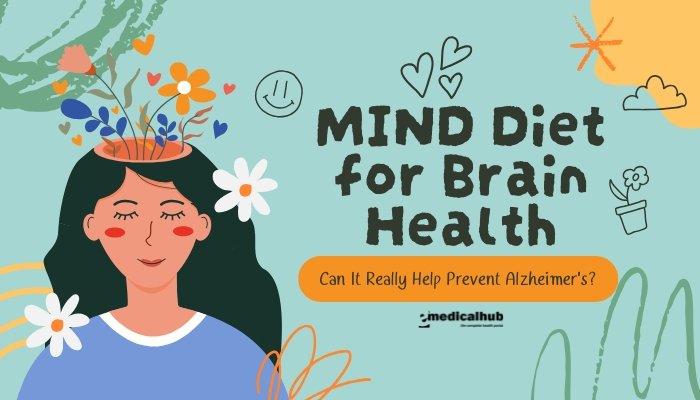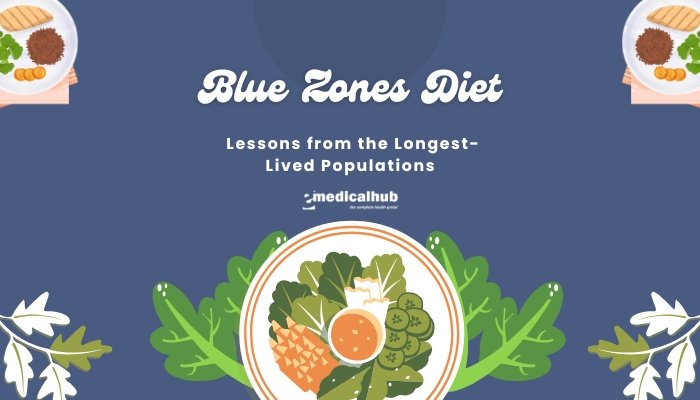Introduction
Originally devised for celiac disease sufferers who must avoid gluten for medical reasons, gluten-free diets have turned into a mainstream trend. From gluten-free breads and pastas to specialized restaurant menus, this approach has gained sweeping popularity, even among people without diagnosed gluten-related disorders.
Advocates argue a gluten-free regimen can improve digestion, boost energy, or address vague gastrointestinal complaints. Critics, however, see it as a modern “health fad” that might lead to unnecessary dietary restrictions or potential nutrient gaps.
So, what does science say about gluten-free eating for the general population? Is eliminating gluten helpful for certain individuals beyond celiac disease, or do the supposed benefits rest largely on anecdotal experiences? This article delves into how gluten affects the body, explores medical reasons for gluten avoidance, and clarifies the pros and cons of adopting a gluten-free diet if you’re not clinically diagnosed with celiac or gluten sensitivity.
Ultimately, it’s about balancing evidence-based knowledge with individual health responses—ensuring that any choice around gluten aligns with genuine needs rather than fleeting trends.
Disclaimer: The following is intended for educational purposes only and should not replace medical or nutritional advice. If you suspect gluten intolerance or celiac disease, consult a qualified healthcare provider for proper evaluation.
Understanding Gluten and Celiac Disease
What Is Gluten?
Gluten is a protein composite found in certain grains:
- Wheat (including spelt, kamut, farro)
- Barley
- Rye
- Triticale (a wheat-rye hybrid)
It contributes to the elasticity and chewiness in breads and baked goods. In a typical Western diet, gluten is nearly ubiquitous—think breads, cereals, pasta, pizza, baked snacks, and so on.
Celiac Disease Overview
Celiac disease is an autoimmune disorder triggered by gluten ingestion in genetically predisposed individuals:
- Immune Reaction: Eating gluten damages the small intestine’s lining, leading to malabsorption, nutrient deficiencies, and various symptoms (diarrhea, bloating, fatigue, anemia).
- Strict Gluten Avoidance: The primary treatment is a lifelong gluten-free diet. Even small amounts of gluten can provoke inflammation.
For celiacs, gluten is not a personal preference issue—it’s a medical necessity to remove it entirely to prevent serious complications (like osteoporosis, intestinal damage, or other autoimmune conditions).
Non-Celiac Gluten Sensitivity and Wheat Intolerance
Non-Celiac Gluten Sensitivity (NCGS)
While celiac disease is well-defined, non-celiac gluten sensitivity (NCGS) is a less clear entity:
- Symptoms: Bloating, fatigue, headache, “brain fog,” similar to celiac but without the same autoimmune intestinal damage.
- Diagnosis of Exclusion: Usually, celiac is ruled out first. Then individuals notice symptom improvement when avoiding gluten.
- Controversies: Some researchers question if gluten is always the culprit—other components in wheat (e.g., fructans, a type of FODMAP) might trigger similar issues.
Wheat Allergy
Some people have wheat allergy, an immune-mediated response different from celiac. However, it focuses on wheat proteins specifically, not all gluten-containing grains. People with wheat allergy can often consume barley or rye if they only avoid wheat proteins.
Self-Diagnosis Dangers
Many self-diagnose “gluten intolerance” without thorough testing, risking missing other GI conditions (IBS, lactose intolerance, or even celiac). If you suspect a problem, consider professional evaluation—unnecessarily cutting gluten can overshadow more accurate diagnoses or limit your diet needlessly.
Why Are Some Non-Celiacs Going Gluten-Free?
Perceived Health Benefits
- Digestive Comfort: Many people link gluten-free diets to reduced bloating, gas, or irregular stools.
- Energy and Clarity: Some anecdotal claims highlight improved vitality or focus.
- Weight Control: Eliminating typical high-carb foods (like pastries, pasta) might reduce calorie intake, prompting weight loss or better portion control.
Celebrity and Media Influence
Celebrity endorsements or popular wellness gurus often champion gluten-free living as a path to broader wellness, fueling public interest—sometimes overshadowing the need for solid scientific backing.
Modern Wheat Processing
Concerns over genetically modified wheat or refined flours might push some to choose gluten-free, believing older forms of wheat or reducing wheat entirely might be less inflammatory or more “natural.”
Potential Benefits of Going Gluten-Free for Non-Celiacs
Reduced Processed Food Intake
Switching to gluten-free can inadvertently or deliberately cut out many ultra-processed foods (white bread, pizza, certain snacks). Replacing them with more fruits, vegetables, and whole grains (like rice, quinoa, or buckwheat) can indeed enhance overall diet quality.
Possible Symptom Alleviation
For some with IBS-like symptoms or mild digestive distress, removing gluten might reduce bloating or stool irregularities. Whether that’s due to cutting gluten specifically or other irritants in wheat (like FODMAPs) is often unclear—yet symptom relief can be real.
Mindful Eating
Adopting a gluten-free approach requires label-reading and meal planning. This can heighten awareness of general nutritional content, possibly promoting better choices overall—like cooking from scratch or focusing on unprocessed ingredients.
Potential Risks and Drawbacks
Nutritional Deficiencies
Many wheat-based foods are fortified with B vitamins, iron, or folate. Eliminating them without careful replacement can lead to shortfalls, especially if gluten-free alternatives are not similarly fortified. Also, some gluten-free breads or pastas might be lower in fiber or higher in refined starches if not chosen carefully.
Cost and Accessibility
Gluten-free products can be pricier, with specialized flours or compliance measures. This can burden budgets or limit choices. Additionally, some regions have limited availability of truly gluten-free staples, making it tough to sustain.
Over-Reliance on Processed “Gluten-Free” Foods
It’s easy to replace typical bread and snacks with gluten-free versions that remain high in sugar, refined carbs, or additives—negating potential health gains. “Gluten-free” is not inherently “healthy.”
Social and Practical Challenges
Dining out, traveling, or family meals can become complicated. Mistakes can cause confusion if the dietary restriction isn’t medically mandated (like celiac). People might risk cross-contamination concerns or social inconvenience.
Is Going Gluten-Free Without a Medical Need Worth It?
Current Scientific Consensus
For the general population without celiac disease or a proven sensitivity, there is no conclusive evidence that a gluten-free diet inherently offers superior health or weight loss benefits. Some individuals do feel better, though this can be attributed to eliminating certain processed foods, a placebo effect, or reducing other irritants (like FODMAPs). Randomized controlled trials on non-celiacs show mixed or minimal advantage after going GF.
Personal Tolerance and Bio-Individuality
Nutritional responses vary. Some truly have mild intolerance or IBS triggered by wheat. Others handle wheat or gluten with no issues. If a test or elimination diet confirms you have improved well-being without gluten, that’s valid. But broad generalizations are unwise.
Potential Balanced Approach
For those suspecting sensitivity but lacking a formal diagnosis, a short elimination diet under professional guidance can test symptom changes. Alternatively, reducing processed wheat products while keeping occasional whole grains might be a middle ground.
How to Approach a Gluten-Free Lifestyle if Desired
Confirm or Rule Out Medical Conditions
Before going GF:
- Test for Celiac: Blood tests (tTG-IgA, EMA) and, if indicated, an endoscopy with biopsy. You must be on a gluten-containing diet for accurate results.
- Professional Guidance: A registered dietitian or doctor can interpret results and advise next steps.
Focus on Whole, Naturally GF Foods
- Fruits, Vegetables, Legumes: All naturally gluten-free and nutrient-dense.
- Whole Grains (GF versions): Brown rice, quinoa, millet, buckwheat, amaranth.
- Animal Proteins (if not vegetarian): Unprocessed poultry, fish, eggs, dairy.
- Plant-Based Proteins: Lentils, beans, tofu, tempeh (verify no wheat-based marinade or fillers).
Beware of Hidden Gluten
- Sauces, Dressings: Soy sauce typically has wheat; use tamari or coconut aminos.
- Processed Meats or Soups: Thickeners or flavorings can contain wheat starch.
- Cross-Contamination: Even trace amounts from shared cooking utensils, cutting boards, toasters matter if you’re celiac or highly sensitive.
Nutrient Considerations
- Fiber: Replace lost fiber from wheat-based foods with seeds, legumes, vegetables, fruits, or GF grains.
- B Vitamins and Iron: Many gluten-free flours aren’t fortified, so ensure enough from alternative sources.
- Cost: Minimally processed GF staples like beans, rice, produce remain budget-friendly compared to specialized GF processed products.
Real-Life Success Stories and Examples
Non-Celiac IBS Patient
A woman with IBS discovered that certain FODMAPs in wheat triggered bloating. Cutting back on wheat-based items (like bread, pasta) and using gluten-free alternatives reduced her GI discomfort. She found relief not necessarily from gluten avoidance but from limiting fermentable carbs. However, the end result was less wheat consumption, providing practical symptom relief.
Athletic Performance Gains?
An athlete with no celiac or sensitivity tried going GF for better performance. The effect was minimal; he found no major difference in energy once adjusting for total carbs. However, he discovered new variety in carbohydrate sources like sweet potatoes, quinoa, and oats. Ultimately, he reintroduced some wheat in moderation.
Frequently Asked Questions (FAQ)
Will I lose weight just by going gluten-free?
Not inherently. Weight loss depends on overall calorie balance and quality of food choices. Some people lose weight if they eliminate calorie-dense refined foods, but it’s not guaranteed solely from removing gluten.
Are oats gluten-free?
Oats are naturally gluten-free but often cross-contaminated with wheat in processing. Look for certified GF oats if you must strictly avoid gluten.
Is sourdough bread safe for gluten sensitivity?
True sourdough fermentation partially breaks down gluten, but not enough for celiac individuals. Some with mild sensitivity tolerate it better, but it’s not guaranteed safe for strict gluten-free diets.
What if I have negative celiac tests but suspect issues with wheat?
You could have non-celiac gluten sensitivity or be reacting to FODMAPs in wheat. A structured elimination trial or a low-FODMAP approach with dietitian support might clarify.
Will I miss out on essential nutrients cutting out wheat?
Potentially, especially B vitamins and fiber if you don’t replace them with alternative whole grains. Proper planning with other nutrient-dense foods or supplements can fill the gap.
Conclusion
While a gluten-free diet is non-negotiable for those with celiac disease or serious wheat allergy, for the broader population, adopting it as a blanket solution is more nuanced. Some experience real benefits, possibly due to specific sensitivity or by cutting out low-quality processed wheat products. Others see no difference—or find the diet unnecessarily complicated.
If you suspect gluten triggers digestive or other health issues, a formal evaluation is beneficial. Otherwise, focusing on balanced, minimally processed foods, including healthy whole grains (if tolerated), often suffices for robust nutrition. Should you choose to go gluten-free, ensure you do so in a measured way—replacing fiber and micronutrients from alternative grains and produce, reading labels to avoid hidden gluten, and planning meals that remain balanced. The key is clarity on why you’re removing gluten—if it’s clinically justified or if you’re responding to marketing hype. Ultimately, a well-rounded, evidence-based approach is the surest path to dietary success and overall well-being.
References
- Fasano A, Catassi C. Clinical practice. Celiac disease. N Engl J Med. 2012;367(25):2419-26.
- Catassi C, Bai JC, Bonaz B, et al. Non-celiac gluten sensitivity: The new frontier of gluten related disorders. Nutrients. 2013;5(10):3839-53.
- Volta U, De Giorgio R. New understanding of gluten sensitivity. Nat Rev Gastroenterol Hepatol. 2012;9(5):295-9.
- Catassi C, Gatti S, Fasano A. The new epidemiology of celiac disease. J Pediatr Gastroenterol Nutr. 2014;59(Suppl 1):S7-9.
- Biesiekierski JR, Newnham ED, Irving PM, et al. Gluten causes gastrointestinal symptoms in subjects without celiac disease: a double-blind randomized placebo-controlled trial. Am J Gastroenterol. 2011;106(3):508-14.
- Lebwohl B, Ludvigsson JF, Green PH. Celiac disease and non-celiac gluten sensitivity. BMJ. 2015;351:h4347.
- Pietzak M. B vitamin deficiencies: overlooked in celiac disease. Pract Gastroenterol. 2012;36(6):25-37.
- Dale HF, et al. Health benefits and safety of GF oats. Nutr Rev. 2017;75(2):104-107.
- Silvester JA, Weiten D, Graff LA, et al. Living gluten-free: adherence, knowledge, lifestyle modifications and feelings towards a gluten-free diet. J Hum Nutr Diet. 2019;32(4):514-525.
- NIH: Gluten-free diets, a quick start guide. 2021.
- Kelly CP, Bai JC, Liu E, et al. Advances in diagnosis and management of celiac disease. Gastroenterology. 2015;148(6):1175-86.
- Kelly GS. Relationships between celiac disease and other autoimmune conditions. Altern Med Rev. 2010;15(3):198-206.






